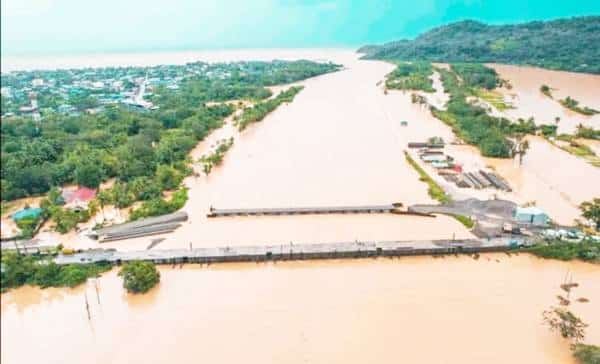Future typhoons in PH may linger longer, cause more damage — UP study
A new study by the University of the Philippines-Diliman College of Science’s Institute of Environmental Science and Meteorology (UPD-CS IESM) scientists revealed that future typhoons in the Philippines could be stronger, more destructive, and linger longer over land due to climate change.

In a study published on Dec. 16, Dr. Rafaela Jane Delfino and Dr. Gerry Bagtasa, along with colleagues from the United Kingdom, discovered that typhoons that may hit the Philippines in the future—such as the deadliest super typhoons in recent memory, Yolanda (Haiyan) in 2013, Bopha (Pablo) in 2012, and Mangkhut (Ompong) in 2018—may have higher "cyclone damage potential" (CDP) than those that we have experienced recently.
“Based on our simulations, it is found that the most damaging tropical cyclones like Haiyan, Bopha, and Mangkhut will have higher wind-related damage potential in the future,” they said.
The researchers used data from past typhoons and projected them onto future climate scenarios revealing that future typhoons may be expected to be stronger and more damaging—like spinning tops, the potentially faster winds and slower movement of these future typhoons could lead to them lingering longer over land and therefore causing more damage.
Simulations showed a future typhoon similar to Yolanda could inflict 37 percent more damage than the 2013 original, while Ompong's wind speeds could reach 270 kilometers per hour (kph), compared to 205 kph under current conditions.
The climate was also forecasted to be warmer and more humid, based on multiple climate projections for 2070 to 2099.
Moreover, the findings underscored the urgency of climate action and disaster preparedness.
It said that beyond just strengthening buildings and evacuation plans, “communities need to adapt to the longer-lasting threat of future typhoons,”—early warning systems, flood mitigation strategies, and resilient agricultural practices are crucial to weathering the storms to come.
“Tropical cyclones of such intensity and damage potential in the future will have serious implications with the increasing exposure and vulnerability in the Philippines,” they added and called for further research using other models and typhoon data sets.